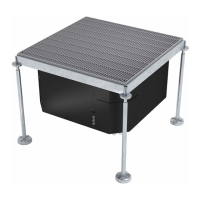What to do if the Stulz Fan controller and the rest of the unit don't work?
- YykrauseAug 4, 2025
If the controller and the rest of the unit aren't working, the possible causes are: * Main power supply missing: Restore power supply. * Main switch open: Close the main switch. * Power supply to the controller is missing: Check the voltage on the power supply cables and repair the broken cable or restore the missing connection. * Controller faulty: Contact STULZ service.

